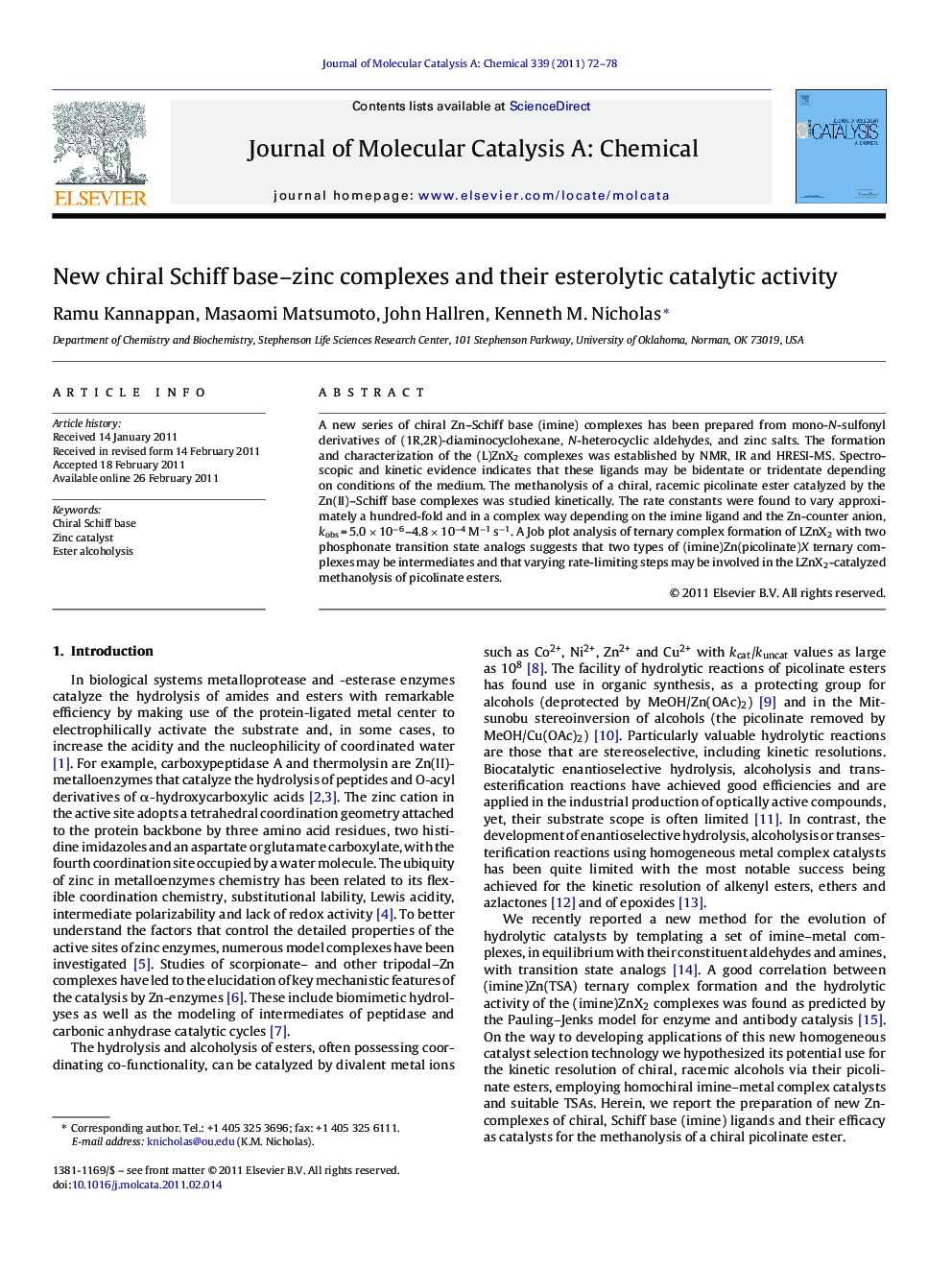| Article ID | Journal | Published Year | Pages | File Type |
|---|---|---|---|---|
| 66472 | Journal of Molecular Catalysis A: Chemical | 2011 | 7 Pages |
A new series of chiral Zn–Schiff base (imine) complexes has been prepared from mono-N-sulfonyl derivatives of (1R,2R)-diaminocyclohexane, N-heterocyclic aldehydes, and zinc salts. The formation and characterization of the (L)ZnX2 complexes was established by NMR, IR and HRESI-MS. Spectroscopic and kinetic evidence indicates that these ligands may be bidentate or tridentate depending on conditions of the medium. The methanolysis of a chiral, racemic picolinate ester catalyzed by the Zn(II)–Schiff base complexes was studied kinetically. The rate constants were found to vary approximately a hundred-fold and in a complex way depending on the imine ligand and the Zn-counter anion, kobs = 5.0 × 10−6–4.8 × 10−4 M−1 s−1. A Job plot analysis of ternary complex formation of LZnX2 with two phosphonate transition state analogs suggests that two types of (imine)Zn(picolinate)X ternary complexes may be intermediates and that varying rate-limiting steps may be involved in the LZnX2-catalyzed methanolysis of picolinate esters.
Graphical abstractA series of chiral Schiff base–zinc complexes derived from N-heterocyclic aldehydes and trans-cyclohexyldiamine N-sulfonamides are effective catalysts for the methanolysis of picolinate esters. Substantial differences in catalytic activity derive from the steric and electronic nature of the N-heterocycle and sulfonyl groups of the imine ligand and the anionic ligand X.Figure optionsDownload full-size imageDownload high-quality image (110 K)Download as PowerPoint slideHighlights► New zinc–Schiff base complexes of cyclohexyldiamine-sulfonamides are prepared ► Their ester methanolyis activity for depends on the imine, counteranion and sulfonamide units ► The mechanism is probed via ligand deprotonation and TSA binding experiments.
